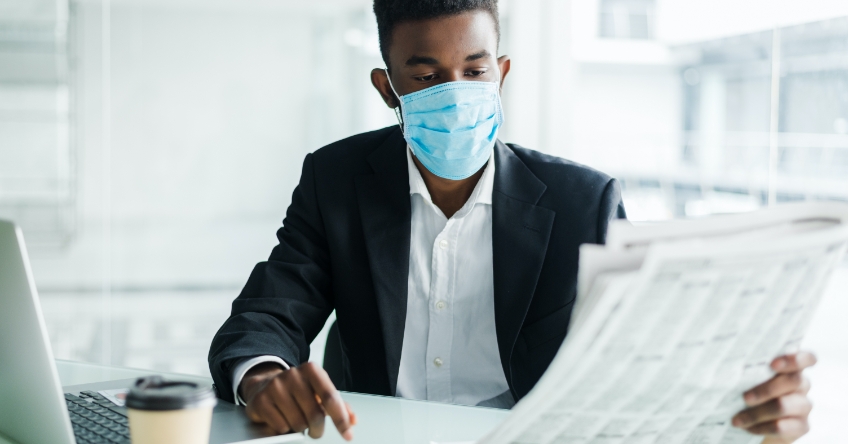Post-Pandemic Dentistry: Why Dental Caries Are On the Rise

Editor’s note: In September 2020, the American Dental Association Health Policy Institute released findings from an impact poll highlighting an increase in certain oral health conditions since the onset of the COVID-19 pandemic. Doctors who participated in the ADA poll reported increases in bruxism (54.9%), chipped and cracked teeth (53.4%), temporomandibular disorder symptoms (53.4%) and caries (26.4%) among patients. In this series, Spear faculty explore what clinicians and practice teams must know to successfully treat these four conditions on the rise.
As we continue into our second year of the COVID-19 pandemic, the ongoing health challenges that came with it continue to impact our practices, our patients, and our collective mental health. This is especially clear when you consider ADA data highlighting how doctors are seeing an increase in bruxism, chipped and cracked teeth, TMD, and increases in caries and periodontal disease.
As dental professionals, what does a respiratory virus like this one have to do with an increase rate of caries in our patients? There are lot of factors that may contribute to our patients’ overall oral health — specifically, an increase in caries and decay.
Factors that contribute to tooth decay and oral health decline
As dental professionals, we must understand why many of our patients are suffering with a variety of dental issues during the COVID-19 pandemic, including (but not limited to) increased decay rates. Importantly, there are many factors at play that can impact our patient’s overall oral health — some directly and others indirectly.
Stress and xerostomia
Stress has a significant impact on the immune system and the body’s ability to fight off infection. Stress also affects our body’s overall chemistry, causing us to produce stress-related hormones like cortisol, which has widespread effects throughout the body.
Stress also affects our overall saliva production and flow,2 leading to an increase in xerostomia, which in turn can lead to thicker and stickier plaque than what’s normally rinsed away with saliva. Of course, saliva has buffering capacity to neutralize acid that’s produced from decay-causing bacteria.
When people deal with stress long enough, it can lead to anxiety and depression — which may lead our patients to be prescribed medications designed to help manage these issues. Many of these medications are helpful for managing these conditions, but a common side-effect of many of these medications is xerostomia.

Masks and mouth-breathing
Our patients are wearing masks more than ever, which is leading many to become obligate mouth-breathers. Because patients may struggle to breath through their nose while wearing a mask, they will default to breathing through their mouths.
Mouth-breathing has long been known to cause a host of negative effects on the oral environment from the constant wetting and drying of the tissues. Mouth-breathing and xerostomia affect the overall oral environment, including the overall pH and the flora and microbiome of the oral cavity.
Not only does xerostomia contribute to changes, but stress also affects our bodies’ overall chemistry. This alters the overall flora and microbiome in the oral cavity, and with these changes, the overall balance of the bacteria changes. In many cases, this leads to an imbalance that can lead to more bacteria, which can cause conditions including caries and periodontal disease.
Changes in diet
Another factor that may lead to an increase in caries during the COVID-19 pandemic is secondary to stress, and that’s stress-eating. Classic comfort foods are often high in sugar content, which alters the overall bacteria flora in a way that’s more ideal for decay-causing bacteria.
Similarly, the pandemic is likely causing changes to patients’ overall diet, including the foods they eat and the overall frequency. As patients have been working more at home and less at a workplace, many patients may find themselves eating different foods or eating or snacking more frequently at home. There again, this changes the overall oral environment. If patients haven’t changed their overall oral hygiene habits to compensate for this, decay rates may increase.
Financial changes and oral health
Another factor to consider is that many patients also suffered significant financial and economic changes amid the pandemic. There were massive changes in the workforce during this time and thus, many patients experienced significant changes in finances.
Job changes and furloughs during the pandemic led to changes in dental benefit plans for many patients. Meanwhile, many dental offices were closed or saw minimum patients during the earliest days of the pandemic, which led to a significant lapse in care for many patients during this time.
For patients who have poor oral hygiene or who already have significant dental conditions, this created a perfect storm for a significant surge in the rate of caries and other dental conditions.
Final thoughts—and what to do
The COVID-19 pandemic has created a significant increase in health challenges for everyone, directly and indirectly. The overall long-term effects and issues will take years for us to begin to understand.
Importantly, the only way to effectively serve patients as they return to the practice with more severe oral health conditions is to make sure we, as clinicians, are knowledgeable about how to treat oral decay. Access to on-demand clinical learning and a supportive community of like-minded clinicians is just one of the ways Spear members can better serve patients today.
References:
- Gholami N, Hosseini Sabzvari B, Razzaghi A, Salah S. Effect of stress, anxiety and depression on unstimulated salivary flow rate and xerostomia. J Dent Res Dent Clin Dent Prospects. 2017 Fall; 11(4):247–252.
- Chen L, Zhao J, Peng J, Li X, Deng X, Geng Z, Shen Z, Guo F, Zhang Q, Jin Y, Wang L, Wang S. Detection of SARS-CoV-2 in saliva and characterization of oral symptoms in COVID-19 patients. Cell Prolif. 2020 Dec; 53(12):e12923.
SPEAR NAVIGATOR
Transform how your practice runs by engaging the team through
coaching and training
A guided path to excellence through structured coaching and self-guided resources that will align your team, streamline processes and drive growth. Transform your practice by implementing Spear’s proven playbooks for developing and retaining a high-performing dental team.

By: Jeff Lineberry
Date: November 15, 2021
Featured Digest articles
Insights and advice from Spear Faculty and industry experts


